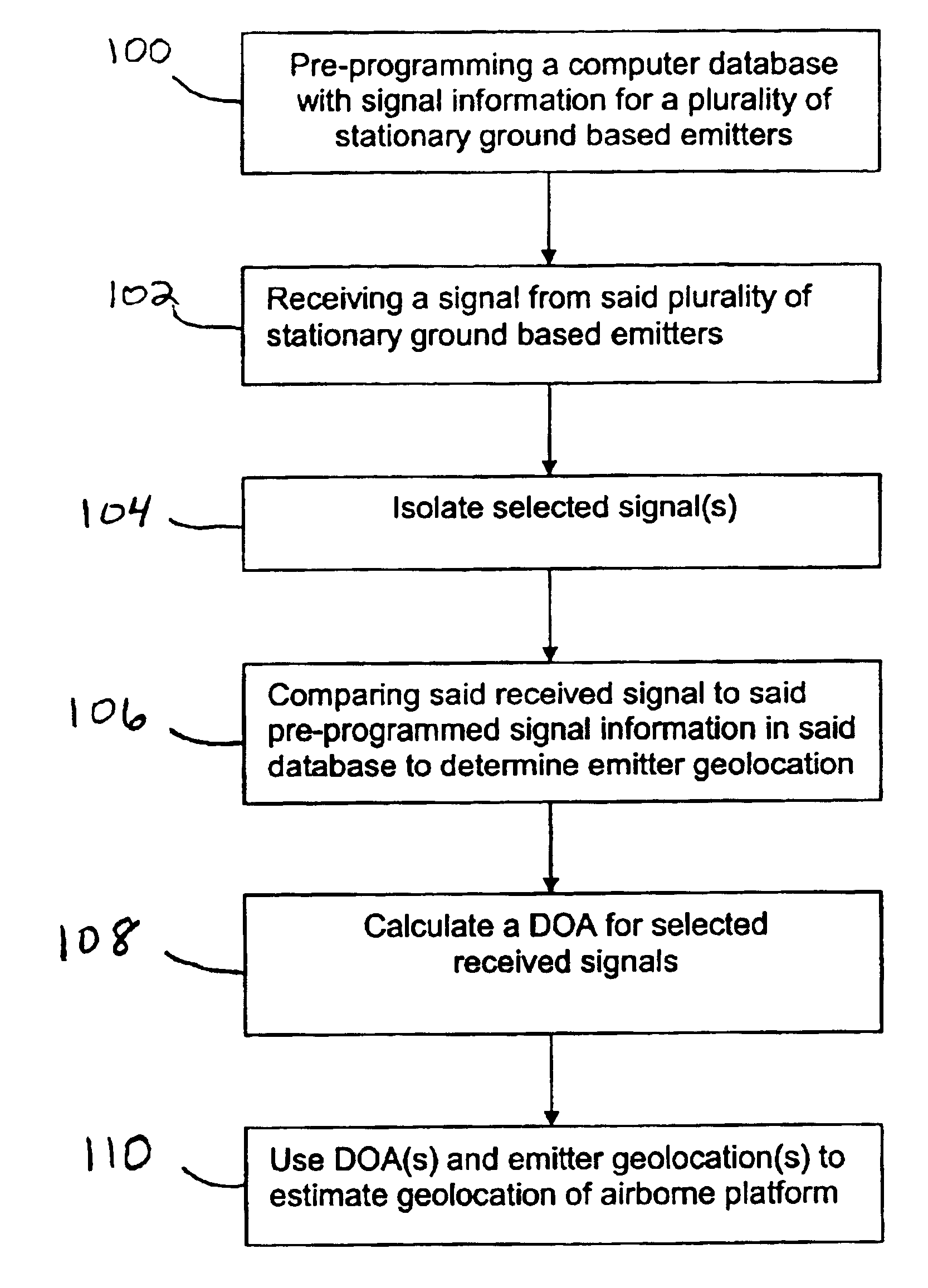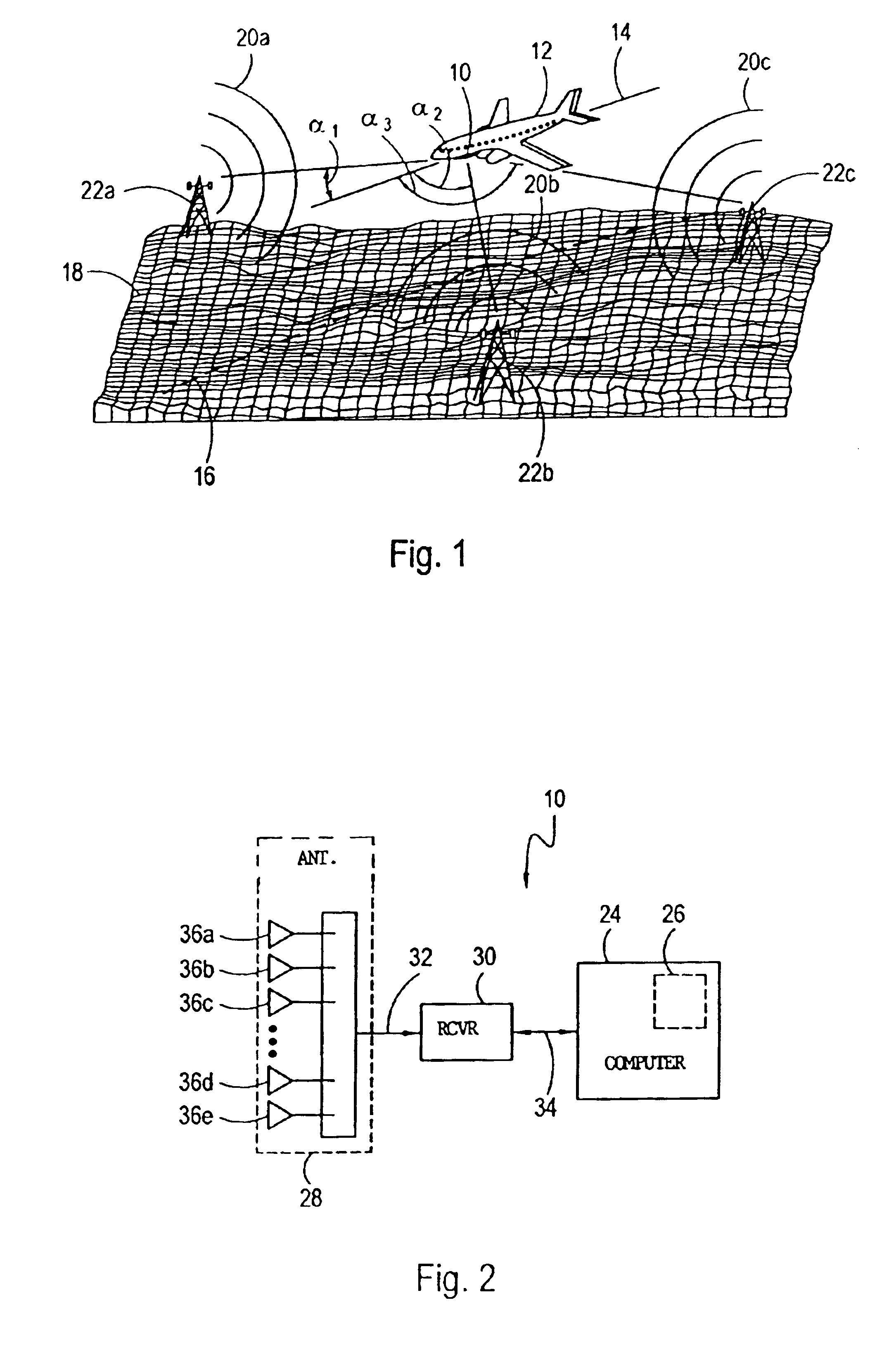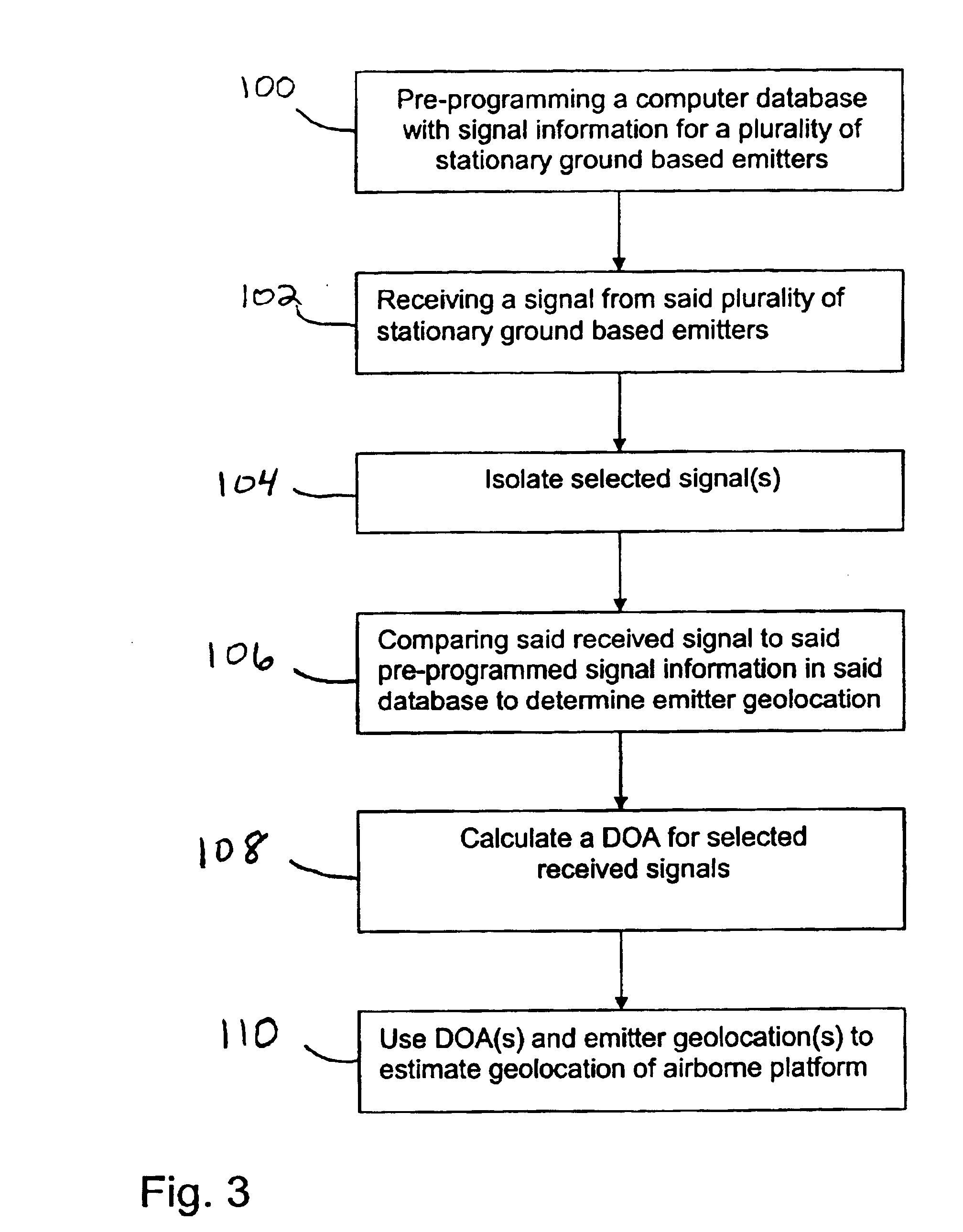Intelligent passive navigation system for back-up and verification of GPS
a passive navigation and intelligent technology, applied in direction finders using radio waves, navigation instruments, instruments, etc., can solve the problems of system having the ability to selectively use signals from a large number of diverse ground based emitters, easy to jam, and easy to be subject to system outages, etc., to reduce biases, improve positioning accuracy, and reduce biases
- Summary
- Abstract
- Description
- Claims
- Application Information
AI Technical Summary
Benefits of technology
Problems solved by technology
Method used
Image
Examples
Embodiment Construction
[0022]Referring initially to FIG. 1, an intelligent passive navigation system (hereinafter system 10) for determining the geolocation (e.g. latitude, longitude and altitude) of an airborne platform 12 on a flight path 14 is shown. For clarity, a projection 16 of the flight path 14 onto the surface of the earth 18 is also shown. As intended for the system 10, the geolocation of the airborne platform 12 can be initially estimated and subsequently updated as the airborne platform 12 moves to allow the airborne platform 12 to be navigated along a desired course of flight. With the description provided below, those skilled in the pertinent art will appreciate that the system 10 can be used alone as a primary navigation system for an airborne platform 12 or as a secondary navigation system to back-up and verify a primary navigation system, which can be a GPS navigation system or a primary navigation system based on some other technology.
[0023]In operational overview as shown in FIG. 1, th...
PUM
 Login to View More
Login to View More Abstract
Description
Claims
Application Information
 Login to View More
Login to View More - R&D
- Intellectual Property
- Life Sciences
- Materials
- Tech Scout
- Unparalleled Data Quality
- Higher Quality Content
- 60% Fewer Hallucinations
Browse by: Latest US Patents, China's latest patents, Technical Efficacy Thesaurus, Application Domain, Technology Topic, Popular Technical Reports.
© 2025 PatSnap. All rights reserved.Legal|Privacy policy|Modern Slavery Act Transparency Statement|Sitemap|About US| Contact US: help@patsnap.com



